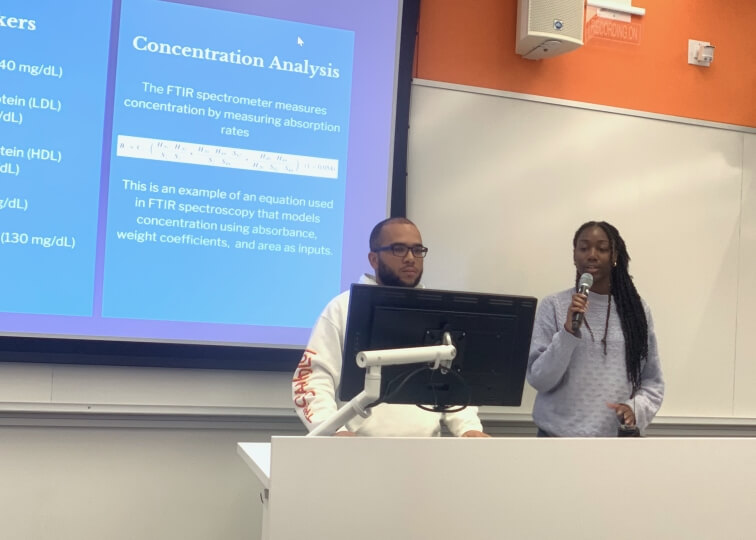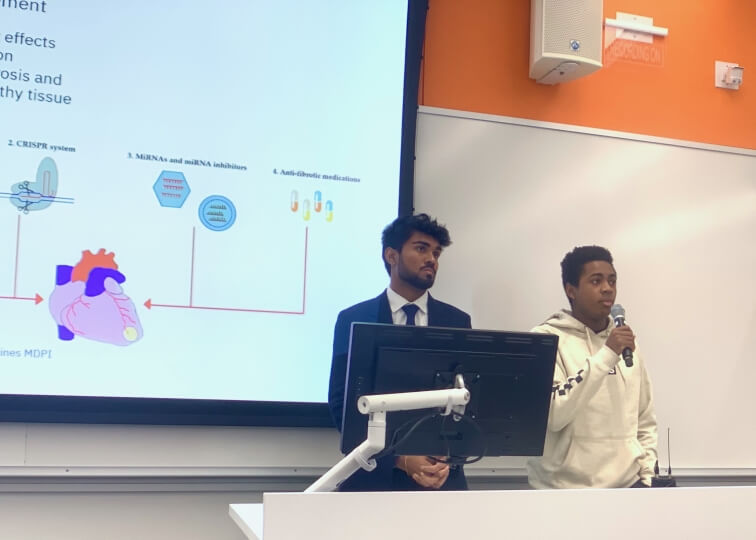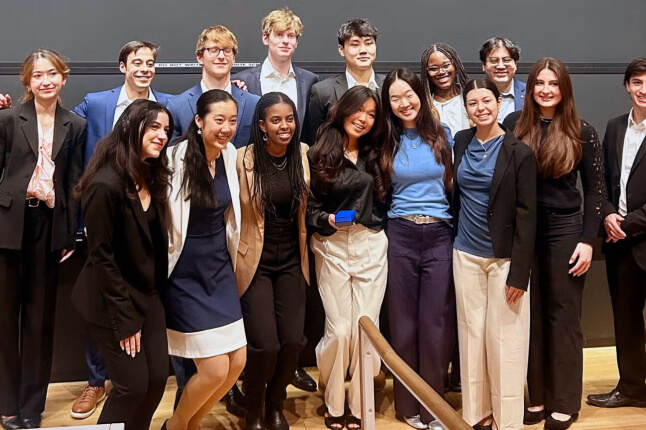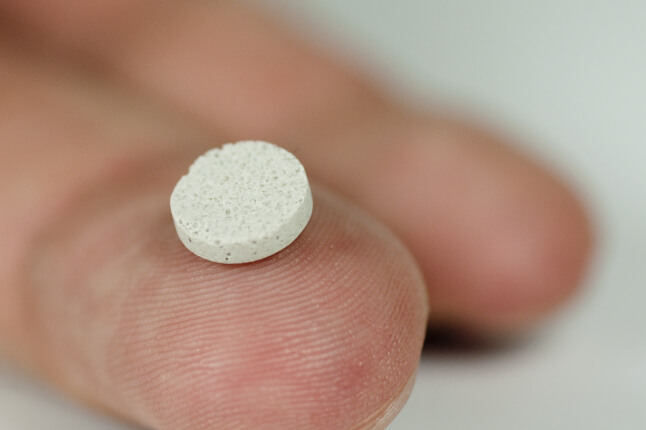News
Dekyus Dickerson and Omolive Eboreime pitch their ES53 final project, a method for detecting heart disease using spectroscopy (Matt Goisman/SEAS)
An artificial ventricle could reduce the risk of congestive heart failure by increasing blood output in the heart. A portable oxygen concentrator could improve the lives of patients with pulmonary fibrosis, a condition characterized by scarring in the lungs. An injectable hydrogel could help heal scar tissue in the heart, also known as myocardial fibrosis.
From hypertension to diabetes, technology has the potential to aid in the diagnosis and treatment for a wide range of diseases and conditions. Students in “ES53: Quantitative Physiology as a Basis for Bioengineering,” the introductory bioengineering course at the Harvard John A. Paulson School of Engineering and Applied Sciences (SEAS), concluded their fall semesters by presenting projects geared towards technological solutions.
“They start working collaboratively on their projects in the last month of the semester, and they all did a really nice job trying to understand the issue, leverage what technology is already out there, and then apply it in a novel way,” said Linsey Moyer, course instructor and Associate Director of Undergraduate Studies in Biomedical Engineering at SEAS.
Some of the final projects directly related to organ systems studied in the course, while others were inspired by personal experience or interest, or topics covered by guest lecturers.
“I have a family member who had a stroke, and I thought this would be a really cool way to integrate their experiences,” said third-year student Coby Garcia, whose team researched technologies that could improve rehabilitation from a stroke. “We learned about the nervous system and talked about electrodes in labs, so I thought this would be a really cool way to fuse the two. My peers were very receptive to the idea and hopped on.”
Understanding how diseases disparately impact different demographics is a required research component for ES53 projects and was part of each team’s presentation. Second-year student Dekyus Dickerson’s team looked into using spectroscopy as a new detection method for heart disease, which studies have shown disproportionately affects Black people in the U.S.
“My group was entirely made up of Black students, so hopefully as future Black doctors and healthcare professionals, we’ll be able to work to fix that,” Dickerson said. “Coming from a lower-income community, I’ve known a lot of people who had heart attacks and had no idea beforehand that they were living unhealthy lifestyles. That was something I felt very passionately about, and a lot of my group felt very passionately about as well.”
Japesh Patel and Joshua Okolo present their ES53 final project, a hydrogel for treating myocardial fibrosis (Matt Goisman/SEAS)
Extensive research is necessary to find technological solutions to health challenges. But that’s only the first step on a long road to commercialization and deployment to actual patients and getting there requires funding. The final presentations are framed as a start-up pitch competition, in which students vote for the projects that would receive hypothetical funding.
“It makes it a little more interactive and fun and makes them think about it in a different way than just watching a presentation,” said Moyer. “It helps them think about it as both the person asking questions and the person answering them.”
Dickerson’s team, which also included Aaron Bradford, Zaria Ferguson and Omolive Eboreime, won first place in its section. The other first-place prize went to the myocardial fibrosis hydrogel team, which consisted of Kow Simpson, Alex Sunday, Joshua Okolo and Japesh Patel.
“Pansyn,” an artificial pancreas to help treat type 1 diabetes, was one of two runners-up.
“We didn’t really study endocrine medicine, or the systems related to the pancreas, so we got to use our knowledge from the course to explore a new system,” said sophomore Leah Lourenco, whose Pansyn team also included Wafiqah Zubair, Jiani Johnson, Lani Tran and Hayden Graham. “What I learned about device design is that there are always new problems. Even when we had something we were really proud of, we’d come back the next day and realize there were more things to optimize.”
Topics: Academics, Bioengineering
Cutting-edge science delivered direct to your inbox.
Join the Harvard SEAS mailing list.
Press Contact
Matt Goisman | mgoisman@g.harvard.edu




